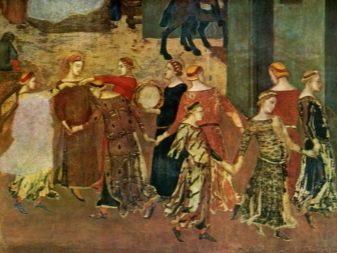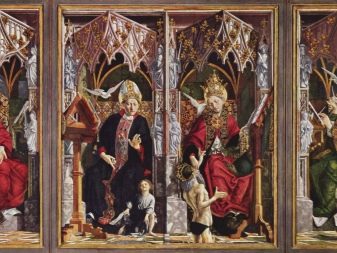All about the gothic style
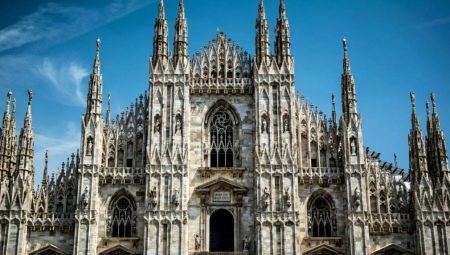
The architectural style of medieval Europe is remembered for its characteristic pointed towers, tall, arrow-like windows, columns and stained-glass windows. The Gothic style has left its mark on the entire world architecture.
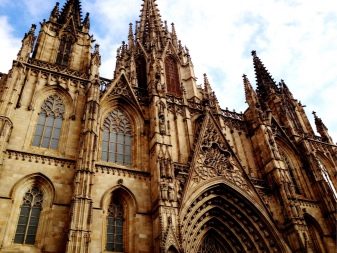
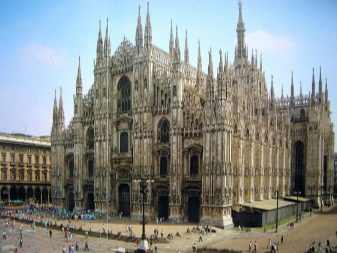
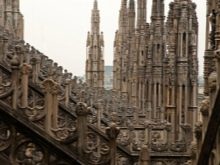
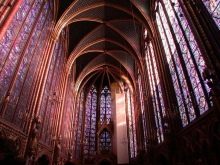
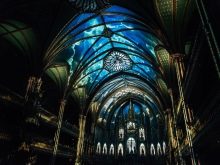
What it is?
A whole period in the development of European culture, common in the central territories, as well as in the west and northeast of Europe, from the 11th to the 16th century, is called Gothic.
Translated from Italian, gotico means "unusual", "barbaric".
This term was introduced by the Italian Giorgio Vasari. The Gothic period follows the Romanesque and completes the development of medieval art. The subsequent Renaissance era considers the Middle Ages to be a barbaric period.
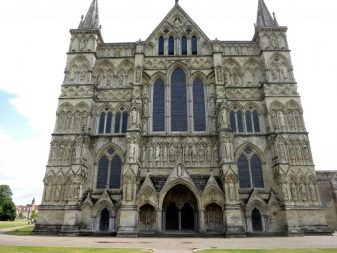


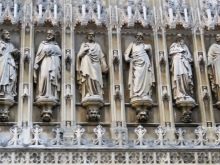

Most often, this term refers to the architectural style in the construction of buildings. But Gothic is a whole trend in art: sculpture, stained glass, miniature, painting, fresco.
The main feature of the Gothic style in architecture is the design of buildings. It is always magnificent, stately and monumental. Most often, the style was used to create religious buildings - churches, cathedrals. And yet, the outer dimensions of buildings always seem to be much more modest than the inside.
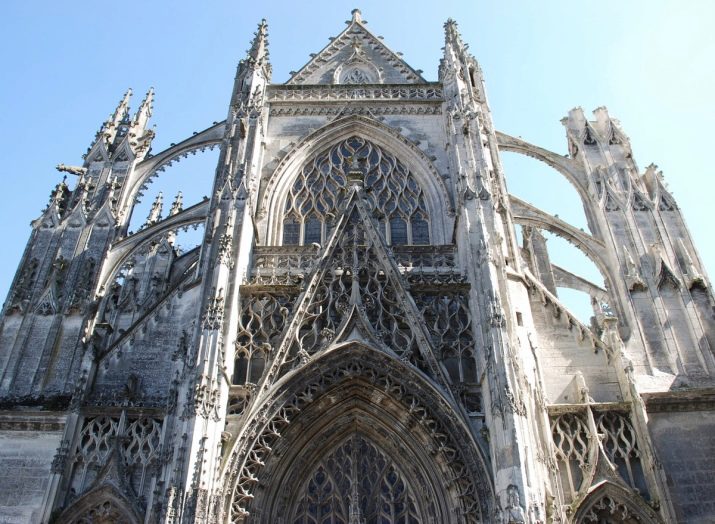
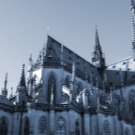
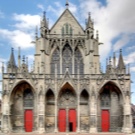
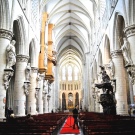
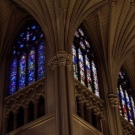
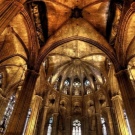
The height of cathedrals and temples was ensured by the use of a frame system in their construction. The design features of Gothic buildings include the presence of:
- ribs (internal support arches);
- flying buttresses (outer thrust arches);
- buttresses (outer vertical thrust pillars);
- pinnacles (pointed turrets);
- vimpergs (cross vaults, carved pediments).

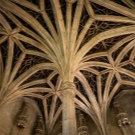
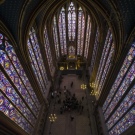
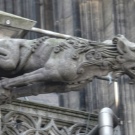
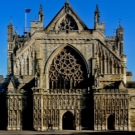
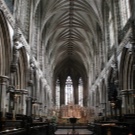
The Gothic style originated in northern France, in the middle of the 12th century. The first Gothic church was built in the Abbey of Saint-Denis. Gradually, this architecture spread to all European countries, including Great Britain, Germany and Spain. Gothic came to the Apennine Peninsula much later, having undergone significant changes, and received its own special "Italian" direction, which was quickly replaced by the Renaissance.
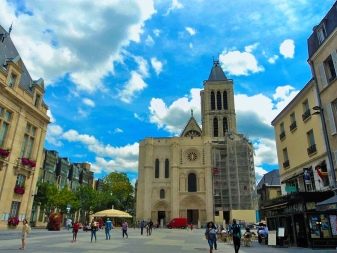
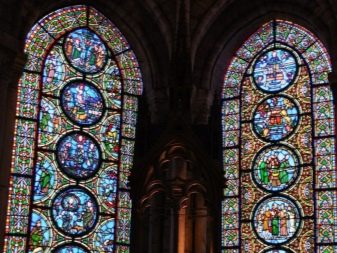
Varieties
All architecture of the medieval Gothic period can be roughly divided into three periods.
- Early, dates from the middle of the XII and the first quarter of the XIII century. The second name of the period is lancet Gothic. The architecture of France dates back to this period. The church of the Abbey of Saint-Denis was first built using ribs instead of ribs and from a rounded arch to a pointed arch.
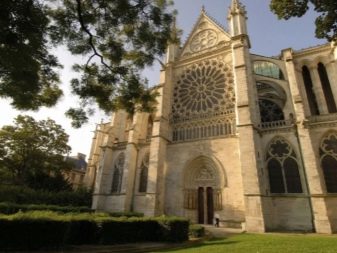
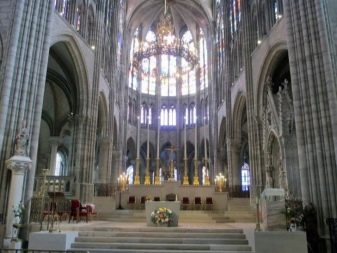
- Mature (high gothic). The second name - "radiant", dates back to 1270-1380 years. It is named after the most typical ornament of the period: rose windows in the form of sunbeams. The most striking example is the Parisian chapel of Sainte-Chapelle.
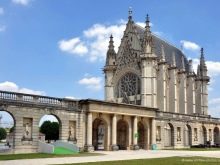
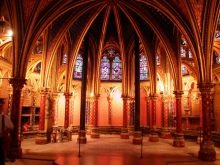
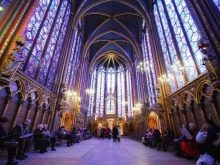
- Late period. The second name is "Flaming Gothic" - the style of Manuelino (Portugal) and Isabelino (Castile region, Spain). Dated to the end of the XIV-beginning of the XVI century. Typical distinctive features in the ornaments: elongated pediments and tops of arches, the presence of patterns that resemble tongues of flame.
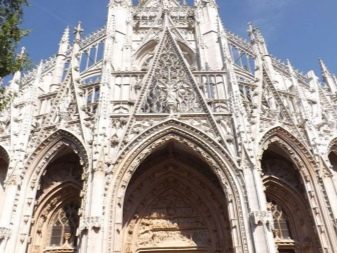
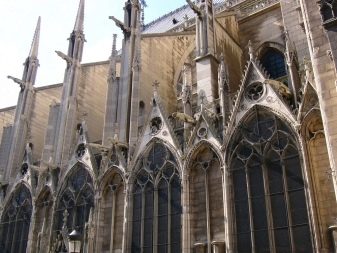
In western and central Europe (Great Britain and Germany), the stages of the Gothic Middle Ages are divided in their own way.
- Lancet gothic, a characteristic feature is the ribs collected in the form of a bundle, visually resembling a lancet. Typical for the XIII century, a striking example is the Cathedral in Salisbury. There are no ornaments in the decoration, simplicity and severity prevail.
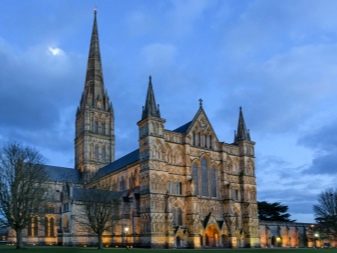
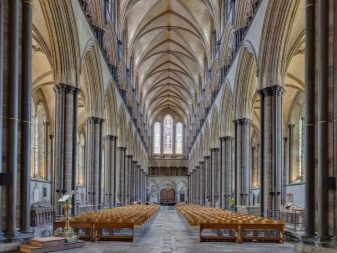
- The appearance of decorative elements in decoration served as the impetus for the name of the new period - "decorated gothic". The vault of the cathedral was equipped with additional ribbed geometric ledges. Dates back to the XIV century. Most vividly represented in Exeter Cathedral.
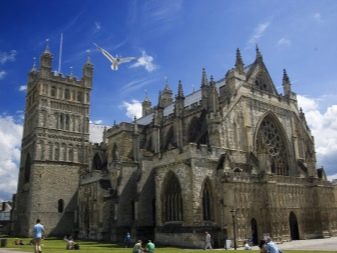
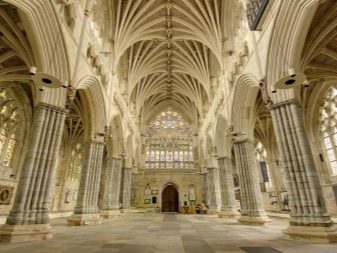
- Perpendicular Gothic, dating back to the 15th century. The name comes from a large number of straight lines in the decoration.
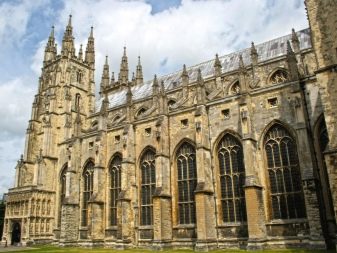
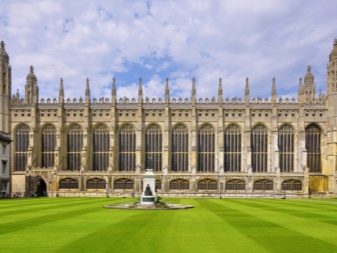
- In the first third of the 16th century, Tudor Gothic appears. It is characterized by the construction of secular buildings, brick is used as the main material. The first buildings made in the Tudor Gothic style were St. James's Palace in London.
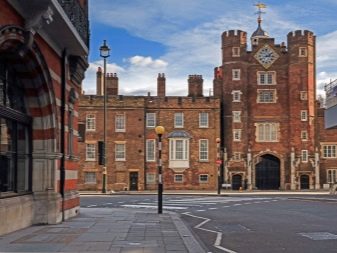
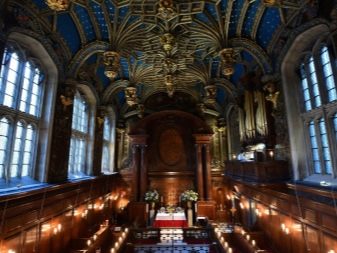
With the development of crafts, houses are gradually acquiring a more familiar look for our time. New, more comfortable furniture samples are being developed, decorative finishing with the use of draperies is being done.
Various styles are combined in modern architecture. In large cities, construction is carried out in the Art Nouveau style, high-tech, constructivism.
Only in the construction of country houses are Gothic elements more often used: buildings are made of stone, high arched windows with stained-glass windows are installed, towers on the roof, they use a classic gray or purple color in the decor.
The newest technologies of the XXI century have made it possible to expand the color range of materials used. In addition to the classic Gothic shades of white, gray, black, dark blue and green, it has become possible to use pink, blue, yellow and orange in the form of stained glass, upholstery and carpets.

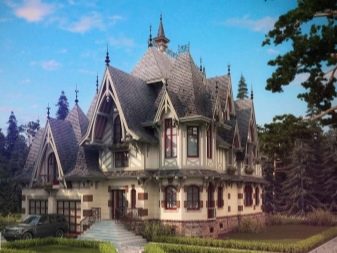
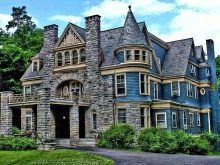
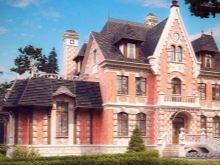
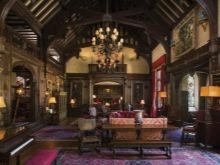
Application in the interior
When creating new projects of low-rise buildings, it is not necessary to fulfill all the necessary and characteristic elements of the Gothic style.
- The construction of a house can be carried out from bricks and concrete blocks, and decorative plaster or panels that imitate stone can be used in the decoration.
The characteristic features of the Gothic style are the interweaving of arches and columns that make up the frame of the house and create a multilayer weave of the roof vault.
On the ceiling in a high room, the style is accentuated by exposed rafters or wooden beams. In the design of the ceiling, it is possible to use painting, stucco molding, forged or cast elements.The style will be emphasized by the use of decorative trims like limestone, marble or wild stone in the lower third of the wall.
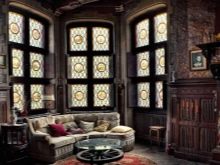
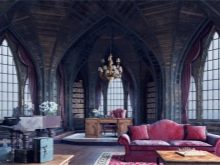

A very good combination is obtained when a plastered wall is applied and partly exposed masonry remains. The room looks intriguing with the Gothic black walls. The drapery with wallpaper or textiles looks very interesting and rich. Black backgrounds with gray ornaments, deep burgundy or purple, dark bottle green, and muted blue or blood red create a Victorian setting.
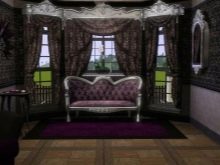
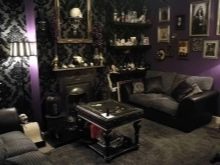
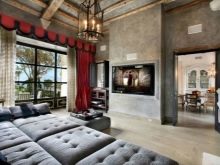
- The gothic style in a city apartment is achieved by the choice of furnishings and furnishings.
To create the desired design of the Victorian era, decorative fireplaces, candelabra, small porcelain sculptures, copper and bronze dishes are installed.
The furniture used is simple, massive and a little rough. Intricately decorated headboards, high carved backs of chairs, paneled cupboards, sideboards consisting of several tiers. Old high mirrors, wrought iron grates, fancy lamps with crystal pendants, carved caskets and unusual poufs are a must.

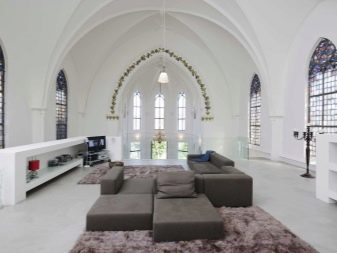
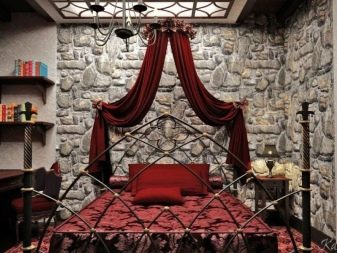
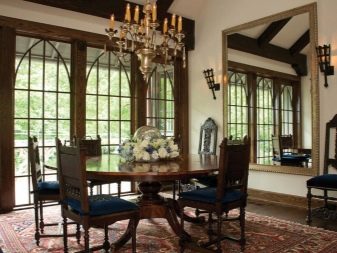
The design of the kitchen in the Gothic style will be more suitable for a country house. It is difficult to imagine in a small city kitchen a huge table or sideboard, candelabra or wrought-iron candlesticks. To create any signs of the Gothic style, tall sideboards and arched cabinets are usually used. The furniture, the design of the ceilings, and the use of forged elements perfectly fit into a large room. It would be logical to install a large dining table with chairs with high carved backs and create a special lighting system.
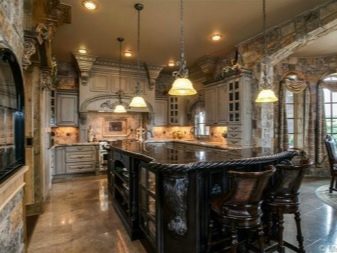
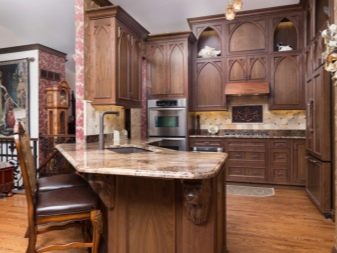
During the repair, it will be useful to replace the windows. Tall, pointed upward frames can be installed. Or just install colored stained-glass windows on the windows.
Decorating a Gothic bathroom does not mean plunging into blackness and gloom. It means luxury and sophistication. Small rooms require careful selection of each piece of furniture. Most often, unique furniture is used, preferably with golden ornaments, and unusual plumbing.
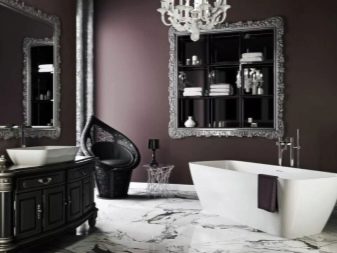
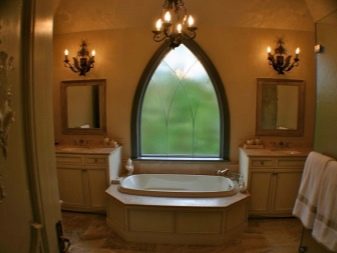
In a large enough room, a dark cast-iron bathtub with legs in the form of lion's paws, with a raised semicircular headboard, will look good. Mixers must be necessarily golden, so as not to disturb the harmony with the furniture ensemble. It is better to finish the walls in gray tones, it can be wooden panels or decorative plaster. The ceiling must match the walls and be made in the same colors. You can try mirror tiles. It will be more correct to use tiles on the floor.

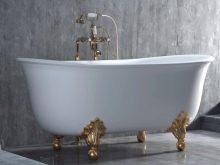
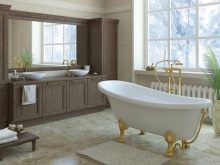
Creating a Gothic style bedroom interior is possible using only some furniture details, even in small one-story houses and apartments. To obtain the desired image, a massive bed with a high back is required. The bed should be made of dark wood. The bedside tables are made from the same material.
For lighting, you should use chandeliers with crystal trimmings. Doorways can be decorated like a stone.
Windows, preferably of an elongated rectangular shape, must be closed with velvet or brocade curtains decorated with tassels and fringes. Chairs and armchairs made of natural wood, with high backs. Cabinets are also made of solid wood.
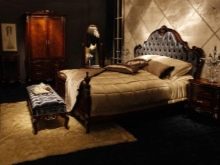
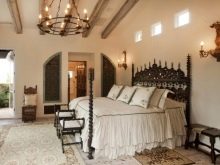
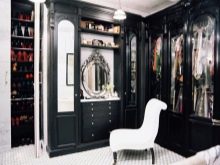
In the children's bedroom, the gothic style can be manifested by the addition of a protective canopy made of light fabrics to the bed, as well as special adjustable lighting on glossy suspended ceilings.
A teenager's room needs a large number of wardrobes to accommodate clothes, books, textbooks and school supplies. In this case, it is possible to use the classic color scheme.The colors red and black will suffice, but you need to use them with care. Optimally - paint the walls white or cream, set the bed in a dark wood with a canopy. Hang dark curtains on the windows, you can use tassels and fringes. Make suspended glossy ceilings with spotlights.

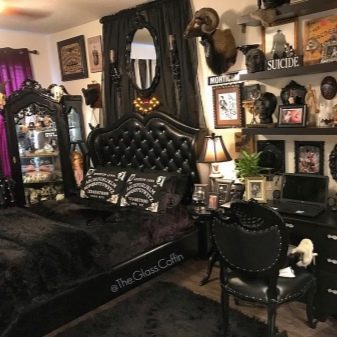
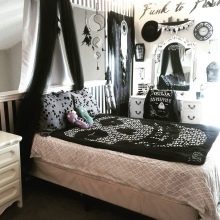

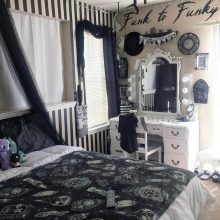
Examples of other design methods:
- red bedspread and tassel pillows;
- stained glass windows;
- for a boy - a forged chest with "treasure" and "treasures".
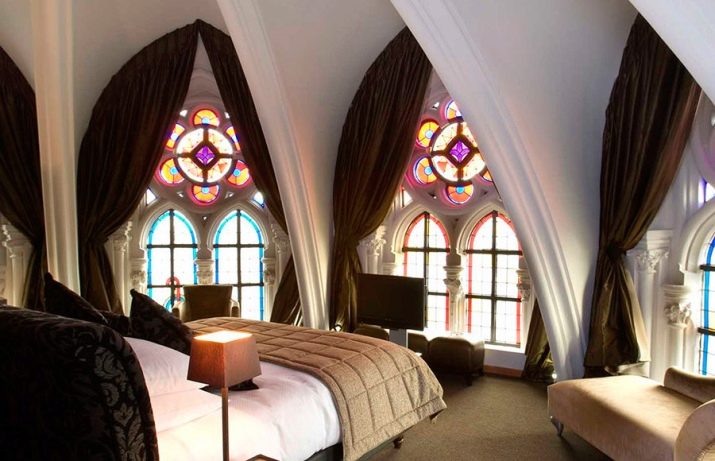
Gothic in clothes and makeup
Modern Goths are representatives of a subculture that appeared in the 70s of the last century and became a continuation of the Gothic style of the Middle Ages. Already in those days there was a fashion for detachment from life, dissatisfaction with what was happening. As a protest, young people wore black suits, corsets, frills, veils, fancy pointed hats and trains, jagged sleeves, and many frills and ribbons. The subsequent Renaissance era revived fashion, and in the 20th century it again became relevant and popular.
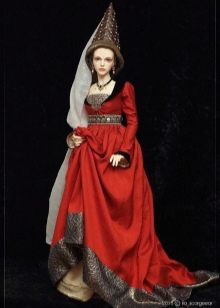

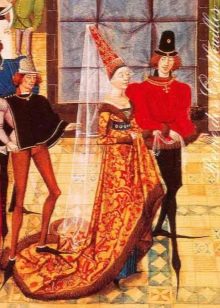
The Gothic style in clothes attracts the eyes of the people around, which is what the Goths are striving for. They want to pay attention to their emotional experiences. These are mostly black clothes (long coats, skirts, leather pants, vests and jackets). Although it can be dark purple, blue or green.
In addition to clothing, accessories made of silver or silver metals are used, the Goths consider gold to be pretentious and categorically turn out to be from it, like from precious stones.
Only diamonds are preferred. White metal and diamonds favorably set off the pallor of the face, mental suffering and experiences that people should see.
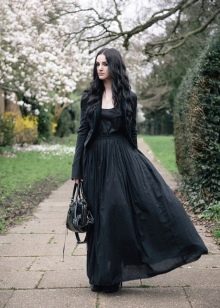

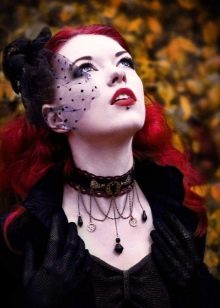
From the punks, the Goths borrowed massive chains, bracelets, rings, collars with spikes, which should indicate a readiness for suffering. Goth men are dressed strictly, a little old-fashioned. Black shirt with long sleeves, sometimes with lace inserts, classic trousers. Stripes or spots of a different color are applied to clothing to create contrast.
Along with their clothes, the Goths wear their own special makeup. The dark tones were supposed to bring the Goths back to the dark Middle Ages or make them look like vampires.
Both girls and boys paint their lips with red lipstick, direct arrows in front of their eyes, paint their eyebrows with a black pencil, apply thick shadows, whiten their faces, imitating pallor.
Wear piercings on their nose, lips, or eyebrows. A manicure with dark varnish is required for both girls and guys. Such makeup is done in the evening, at various events, but for every day to the office for work, it is advisable not to abuse the employer's patience.





Style in art
The Gothic direction in painting appeared towards the end of the XII century.
With the growing influence of the Catholic Church on the political arena of Europe, naturalism appears in the visual arts, which was not previously seen in the paintings of artists.
The new canvases conveyed the living pain of the Savior and the grief of the Mother of God. The most striking example of Gothic painting was the Hourly Book - richly decorated liturgical books. Images of ritual and everyday objects appear in the paintings.
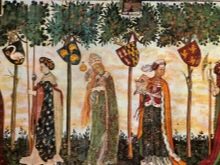
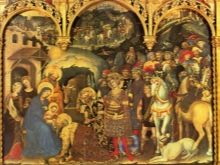
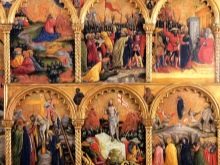
The theologian Thomas Aquinas' statements that a work of art should depict reality also contributed to the development of the Gothic style in art. The depicted faces have acquired their individuality, and the surrounding landscapes and animals make it possible to establish direct contact with the image.
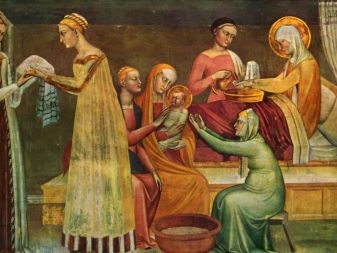
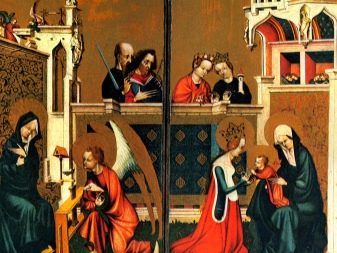
The main signs of Gothic in paintings:
- religiosity of the plot;
- conveying reality through metaphors;
- color brightness;
- multiple action on the canvas.
Masters of the Flemish school were the first to master the art of realism and writing large-scale canvases.
